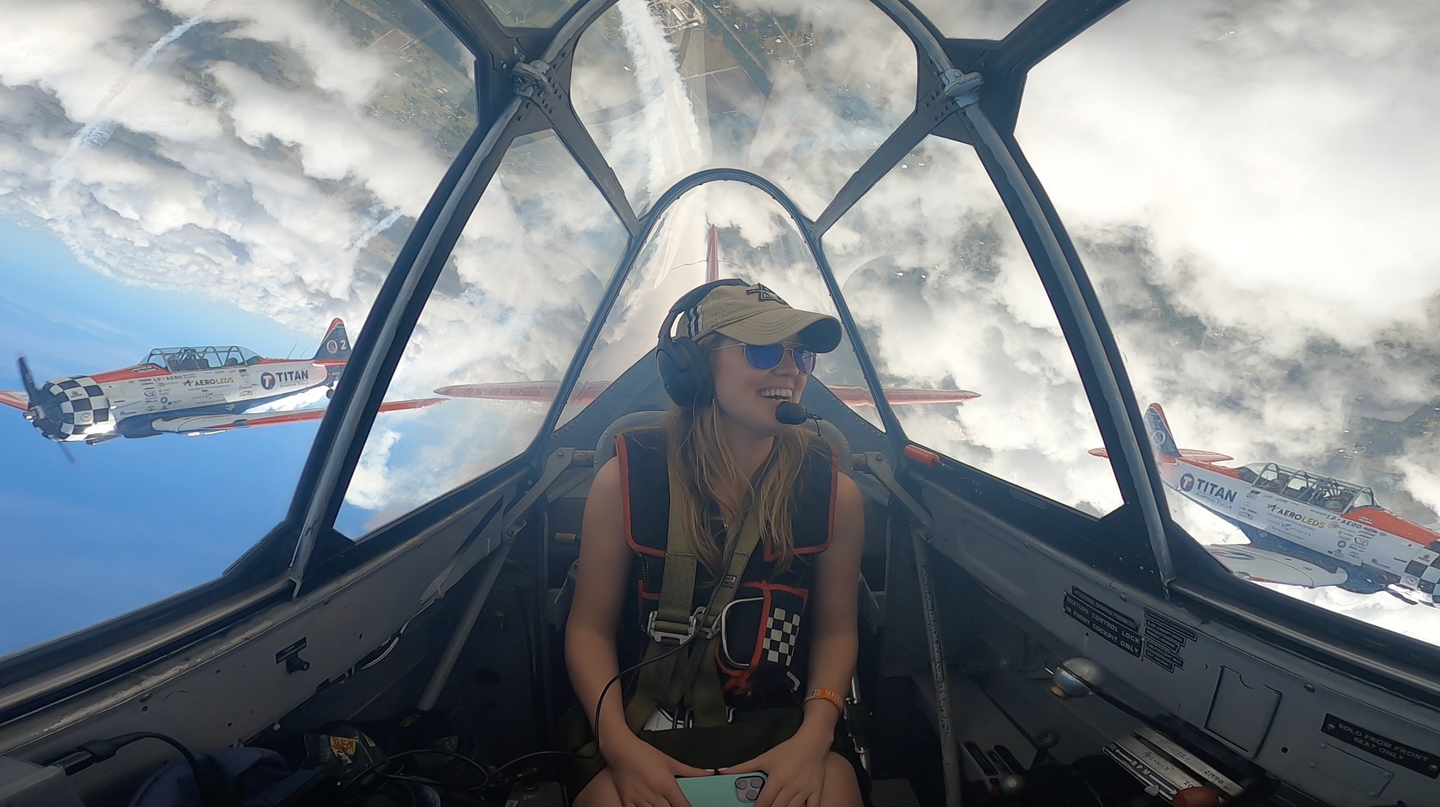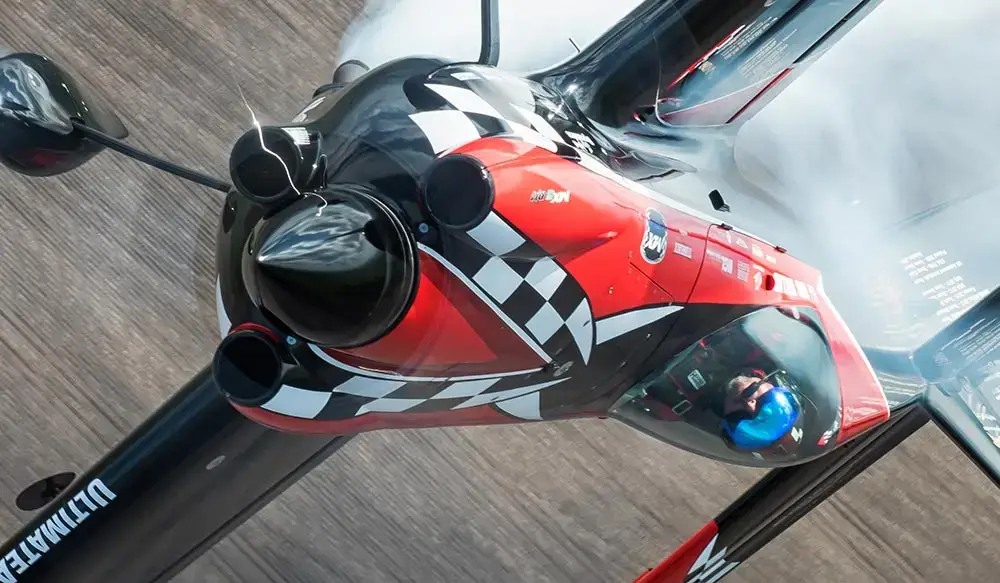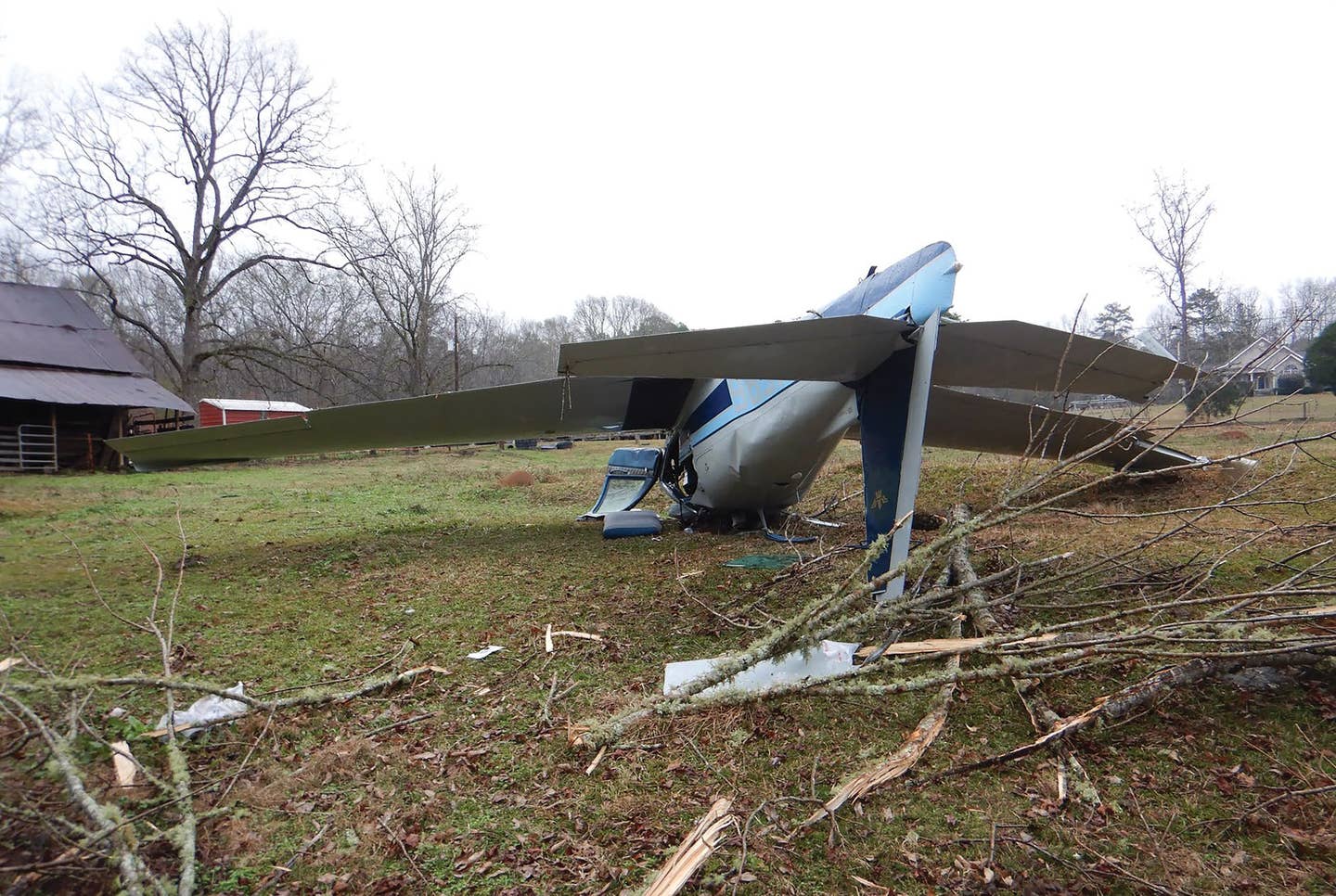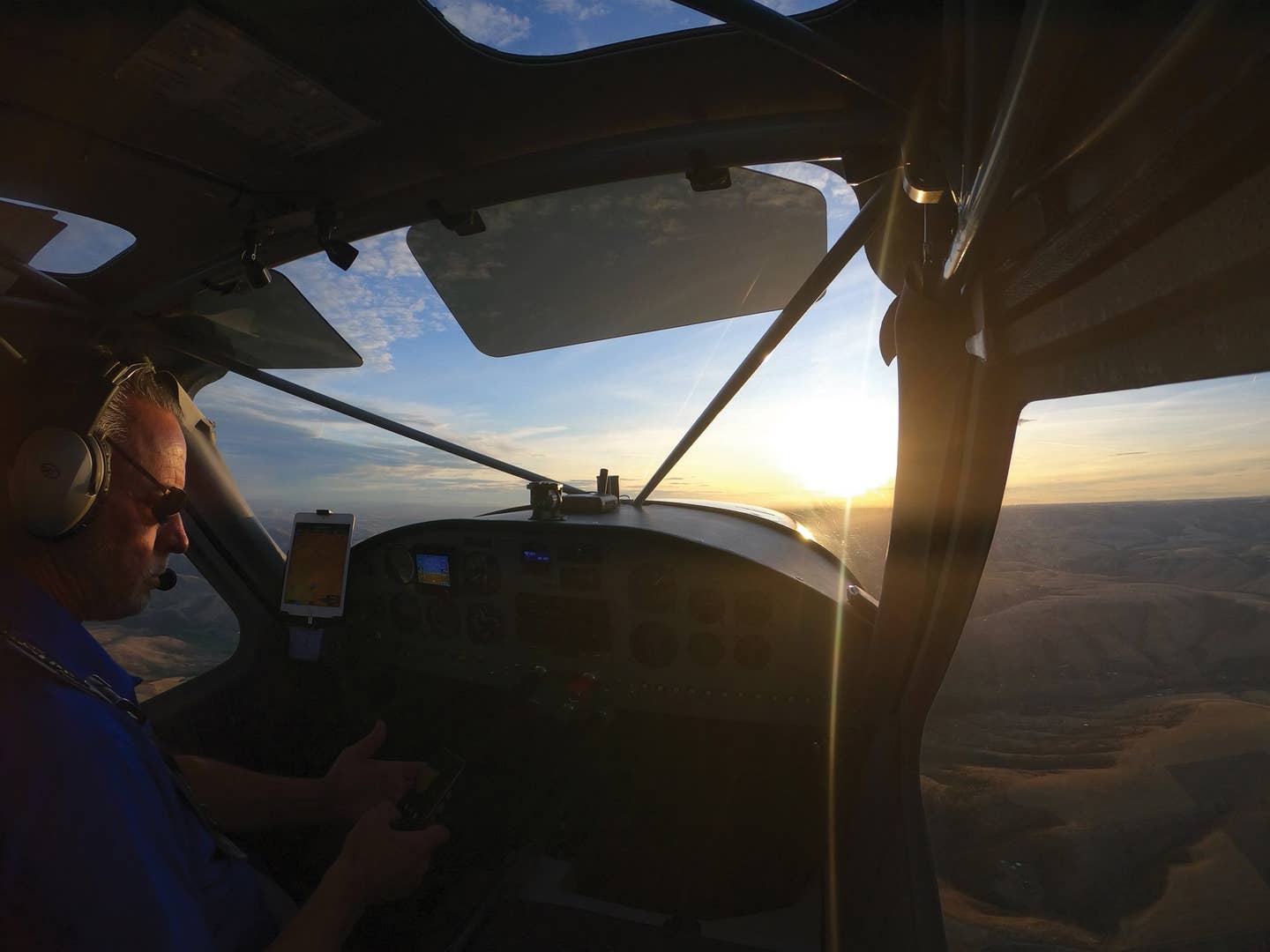
Image: Adobe Stock
The green thumb gene must have skipped a generation, because I’d have trouble keeping a cactus alive, let alone a green field of soybeans. Many farmers would likely be in the same predicament if they didn’t use the services of ag pilots, colloquially known as crop dusters.
If you’ve never seen an ag sprayer service a field, you’ve missed out on an aerial ballet of low and fast flight coupled with attack angles approaching the best aerobatic pilots in the world while the pilot dodges power lines, cell phone towers, and other obstructions. That and the geometric precision of covering acreage in minutes rather than the hours it would take using conventional methods is the hallmark of aerial ag companies and their pilots.
Long gone are the days when the seasoned scrappy pilot loaded up some pesticide, climbed aboard his radial engine biplane with crop dusting spray arms, and took to the fields like a bear to a picnic basket. And while that tactic worked to some degree decades ago, in today’s high-tech world, there is a better and safer way to spray that field.
David Eby, who co-owns Agriflite Services with his wife, Denise, in the rural Midwest community of Wakarusa, Indiana, said that times have definitely changed.
“Specialized software that shows field boundaries, overlays sectional charts, predicts wind drift, and warns of nearby protected crops is uploaded to the aircraft GPS, which are just a few of the high-tech tools available to our pilots today,” Eby said.
And with aircraft such as the Air Tractor 502XP, a turbine-powered workhorse worth over $1 million, it’s easy to see how the industry has progressed since the early days of crop dusting when Lieutenant John Macready and engineer Etienne Dormoy took off from McCook Field in Dayton, Ohio, on August 3, 1921, dispensing the first aerial application of pesticides.
Little did they know that maiden flight would change how ag pilots treated crops and reshape the relevance of crop dusting.
With staggering numbers reported by the National Agricultural Aviation Association (NAAA), which includes treatment of over 127 million acres of cropland in the U.S., it has been proven that aerial applications have increased crop yield, eradicated pests, reduced annual losses, and provided value to the industry of over $37 billion. According to the NAAA, that’s just for a handful of the most prevalent crops, including corn, soybeans, wheat, rice, and cotton.
A Typical Day That’s Never Typical
4:30 a.m. Wake up. Stage and load the aircraft with product. Review field locations and the day’s plan of action.
6:30 a.m. Wheels up. Each load takes anywhere from 30 minutes to an hour to complete. Landing and loading the aircraft with fuel and product takes approximately 5 minutes, which can be done 10-15 times daily.
9 p.m. The last aerial application is completed, and return to base.
9:30 p.m. Postflight tasks, and finally, heading home.
It’s a long day, and that’s if things go according to plan. Throw in occasional maintenance issues, weather issues, unplanned obstacles (think people on the ground who have a front-row seat to your field), and other one-offs, and you can see that your typical day may not be so typical.
With just over 100,000 commercial certificates issued by the FAA in the U.S., only 3,400, or 3.4 percent of that total as reported by NAAA, are registered as ag pilots. So you can see that it truly is a unique job in the world of aviation.
“This type of flying is not for everyone,” said Robert Ching, a seasoned ag pilot whose company, Aura, is based in Lansing, Michigan. “It’s much different than commercial operations in the airline or charter world. In fact, ag pilots are basically professional applicators. The aircraft is simply the tool that provides the service.”
The Aircraft
When ag pilots think of spray aircraft, they generally gravitate to the most popular aerial application aircraft manufacturer, Air Tractor. Founded by 23-year-old Leland Snow in 1951, he designed the first ag plane, designated the S-1, which arguably advanced ag aviation to what it has become.
While Snow’s first attempt ultimately became the Air Tractor AT-301, a successful and highly regarded radial engine aircraft with aerial application as its sole function, by 1977, the design and construction of the Air Tractor AT-300 were completed. This became Air Tractor’s first turbine model, designated the AT-302.
If you want to impress your friends while sitting at the bar of your favorite pub, rattle off the model number of a current Air Tractor ag plane. Show off your Einstein skills by explaining that the first number of the model on any Air Tractor aircraft designates how many hundreds of gallons of product can be loaded in the aircraft.
Air Tractor ag aircraft can accommodate 300 to 800 gallons of chemical for spraying. (For those counting pounds, as pilots do, pesticides weigh around 10 pounds per gallon. Therefore, your chemical payload will be anywhere from 3,000 to 8,000 pounds.) The brute power needed to defy gravity and cruise at up to 191 mph with that payload type is unmatched.
Today’s Technology
With specialized software that mates to the cockpit GPS display and real-time weather and wind information systems working with precisely calibrated spray equipment, using exact automated flow control, ensuring even product application are some of the latest technological features.
Add to that Star Wars-like technology with a heads-up display (HUD) that takes the form of a lightbar on the nose of the aircraft, which helps assure a safe flight where there are no do-overs and where one mistake can make for a very bad day. These technologies improve safety and the chance of a profitable spray season with the required return on investment to keep the company and its pilots in business year after year.
“…The order is prepared in the office before the planned application,” said Agriflite’s Denise Eby. “The crop field information for spraying is generated on our advanced industry tracking software and then uploaded to the aircraft GPS, which includes map overlays, boundaries, adjacent protected crops, and other related information. Paperwork is then provided to the pilot, specifying the crop type, the product to be used, and any other information relevant to the job at hand.”
With the information in hand, the pilot is ready to begin completing the aerial application of pesticides. But how can the pilot ensure the product will be applied on the specified field? After all, ag pilots, like all pilots, are dealing in three dimensions, with wind being one of the biggest challenges in laying down the product.
A puff of smoke, which in this case is good for you. That’s one of the tools, albeit low-tech, that ag pilots use to assist in determining the all-important “wind drift” that is inevitable in every application. Almost every ag aircraft is equipped with an oil/smoke system. If you’ve ever watched an airshow, you are familiar with the smoke those aircraft emit, providing visibility to spectators.
“Minimizing drift is very critical,” said Aura’s Ching of the use of smoke in operations. “It takes experience, as well as pattern testing the aircraft over the field. Fly over the field, puff the smoke, and observe where the product will go due to prevailing winds.
“...[Relative to wind drift, we provide] a margin of safety to assure the product goes where it is supposed to go. Due to unfavorable winds, herbicide applications may not get done in one day. A return trip may be necessary. It simply is part of the business.”
The Pilot
What does it take to be a safe and successful ag pilot?
Having nerves of steel helps. As does a tendency to enjoy high-G aerobatic maneuvers.
However, pilots like yours truly, whose idea of an aerobatic maneuver is a turn approaching a 45-degree bank angle, would likely not be the best ag pilot candidates. Thankfully, others exhibit the characteristics of a great ag pilot and are willing to invest the time to become safe aerial applicators.
First and foremost, a prospective ag pilot needs to be willing to put in the time to learn the pesticide application business. That means spending one to three years working as part of the ground crew for an aviation ag business. While that seems like a long apprenticeship, I’ve had chicken in the freezer for longer. Ag flying is undoubtedly more satisfying than a chicken dinner, so it’s well worth the time invested.
Industry experts agree that for pilots to be successful, they must spend those years as part of the ground crew prepping the pesticides, loading the aircraft, and assisting with some of the airplane maintenance functions. In fact, most ag pilots are also A&Ps, as a successful ag company will generally prefer to have a pilot who can assist in the maintenance of the aircraft, especially if the airplane becomes AOG (Aircraft on Ground) due to an unscheduled maintenance issue.
If these companies had to rely on outside maintenance, the spraying season may be over by the time the problem is resolved. That translates to lost time and money. They simply cannot afford to be AOG.
When it comes to stepping into a single-seat ag aircraft as pilot in command, think of it as a slow process to reach that seat, similar to the military.
Other prerequisites that most ag companies will require include a minimum of 500 hours of tailwheel time. A good work ethic is desired and expected. To assist in moving up from being part of the ground crew to being the pilot, there are training centers specializing in ag pilot training, which can also improve your chances of securing a coveted job with a successful ag company.
Since there are so few qualified ag pilots available in the marketplace, excellent compensation is available to those qualified to perform one of the world’s most dangerous types of flying.
And since the compensation directly results from gross billings, the more you fly, the more you make. This can translate to earning $50,000 annually, with some ag pilots earning north of $300,000 per year. Yes. That’s in U.S. dollars. Spraying fields can grow your pilot bank account quite nicely.
Challenges
Danger: It’s a given in ag flying. It’s something that has to be at the top of everyone’s mind all the time while operating the aircraft. Complacency kills. That’s true in all forms of flying but especially in the work of crop dusting. Situational awareness, obstruction avoidance, and the ability to control the aircraft while assuring that the pesticide is delivered safely and over the designated field is a demanding requirement. This is not the same type of flying as the hundred-dollar-hamburger run.
Time: There is no fast track to being an ag pilot. No 10-day immersive program will turn you into a safe one. It simply will take time. And by taking time you will position yourself to be a safe and competent ag pilot. Shortcuts are nonexistent.
Industry: While this industry has seen substantial growth (pun intended) over the years, it is susceptible to Mother Nature, the economy, and decisions that are made outside of the company and pilot control. And with the average ag company owning 2-plus aircraft and investing in those and their business well into the millions of dollars, it’s not difficult to see how successfully navigating the world of crop dusting is not a slam dunk.
The Future of Crop Dusting
Emerging technologies such as unmanned aerial vehicles (UAVs, commonly known as drones) to deliver and distribute pesticides are on the horizon and being used today in smaller fields.
This is especially true when conventional crop-dusting aircraft cannot mitigate the pilot’s risk from obstacles and adjacent properties. Experts say drone technology is still not quite mature enough to generally compete with conventional ag operations using traditional ag aircraft for fields that require more pesticide than a few trips in the drone would provide.
The next time you take a bite out of that corn on the cob, or you’re trying to keep that cactus alive, remember the growers, herbicide product producers, aerial agriculture companies, crop duster pilots, ground crew, and all of the associated support personnel who tackle this job for a living to put food on our tables.

Subscribe to Our Newsletter
Get the latest Plane & Pilot Magazine stories delivered directly to your inbox






